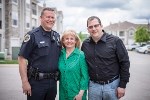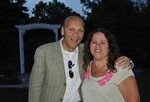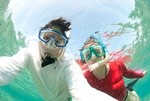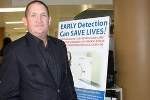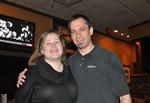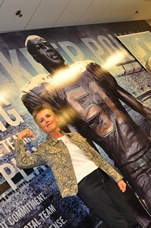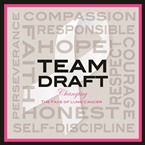Team Draft Co-founder, Chris Draft Leads ACS Advantage Humans Campaign
Tuesday, December 8th, 2015HUMANS VS. CANCER: “ADVANTAGE HUMANS” CAMPAIGN
The spirit of the Society’s “Advantage Humans” campaign conveys the emotions inherent in each and every one of us to deal with the fight against cancer. Photographed and directed by two cancer survivors, the ad campaign brings to life the range of raw, powerful emotions – rage, anger, courage, hope, defiance and others – associated with cancer through the stories of real cancer survivors and their loved ones in print, digital and direct response ads. A few of the individuals featured include:
• Chris Draft (National Cancer Advocate & former NFL player): Tenacity. In 2010, Chris’ wife Keasha was diagnosed with advanced lung cancer after never smoking a day in her life. They got married on November 27, 2011 and she passed away one month later – but on their wedding day, they made a promise that they would work as a team to inspire hope for everyone affected by cancer. He has committed his time and resources to raising awareness for cancer.
• Isabel Lopez: Courage. At 15 years old, Isabel was diagnosed with T-Cell Lymphoblastic Lymphoma on her birthday. Her family and friends show their love and support for Isabel through her online movement #wedancewithIsa. As a dancer, Isabel knows that no one dances alone and just like this journey she is on, she continues to see the love from everyone around her.
• Lauren Smoke: Hope. Lauren was diagnosed with breast cancer while she was pregnant with her first child. She is currently undergoing treatment and recently gave birth to a healthy baby boy, Niko, which means victory.
• Chris Marquez: Defiance. Chris is an LA-based actor, model and screenwriter. He received a liver transplant several years ago, and was then diagnosed with liver cancer in the donor liver. He has since undergone chemotherapy and preventive surgery, and the cancer is isolated to his bladder.
“There are a lot of victories in life – if you’re lucky you experience them every day in some small way,” said Lauren Smoke. “Some things get in the way, but hope is what gets you through everything. What would we do without hope?”
To learn more about the Society’s work in research, prevention and detection, advocacy and service to support patients and caregivers of all ages, at all stages of cancer, visit cancer.org. You can also visit the Society on Facebook.
# # #
About the American Cancer Society
The American Cancer Society is a global grassroots force of 2.5 million volunteers saving lives threatened by every cancer in every community. As the largest voluntary health organization, the Society’s efforts have contributed to a 22 percent decline in cancer death rates in the U.S. since 1991, and a 50 percent drop in smoking rates. We’re the nation’s largest private, not-for-profit investor in cancer research, ensuring people facing cancer have the help they need and continuing the fight for access to quality health care, lifesaving screenings, clean air, and more. For more information, to get help, or to join the fight, call us anytime, day or night, at 1-800-227-2345 or visit cancer.org.
